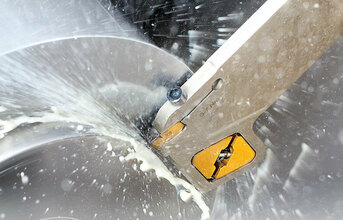
Throughout the world, on a daily basis, machine tool operators must contend with unwelcome vibrations when metal cutting. Vibrations may occur due to issues related to the machine tool itself, problems due to a tool's length and/or its clamping method, the programming of a controller, or a combination of any of these factors.
The unremitting development of advanced cutting tools and the introduction of innovative methodologies to overcome metal cutting
vibrations continue to be a major objective for ISCAR. Over several years, the company's prolific R&D department has created a wide range of effective anti-vibration tools that allow users to achieve high metal removal rates and to increase their efficiencies and profitability. ISCAR continues to be a leading innovator in the field of anti-vibration tools.
ISCAR's Whisper Line tools, designed for turning and grooving applications are referred to as tuned or damped tools which provide effective solutions for the elimination of vibrations. The popular Whisper Line provides a series of key benefits for increasing productivity and for achieving substantial cost savings when grooving and turning. These are common applications where long tool overhangs are required, specifically in grooving blades. When using ISCAR's Whisper Line tools, grooving and turning applications become quieter in difficult to access component areas. Tools with long overhangs are now becoming increasingly popular in these problematic machining zones, specifically in heavy duty and aerospace applications.
Whisper Line tools provide the user with, not only improved surface finish characteristics, but also considerably increased tool life. Whisper Line tools boost production to new levels while providing a quiet operation and cost-efficiency.
(Continued on next page)


























